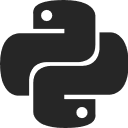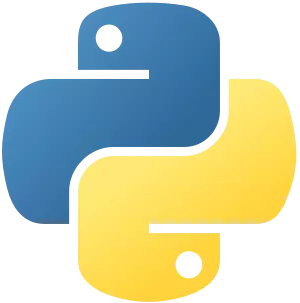Flutter vs NativeScript: Everything You Need to Know
- January 19, 2023
-
1369 Views
- by Ishan Vyas

Flutter and NativeScript are the two most popular frameworks in today’s era. These frameworks help build apps faster, easier to code, enhance performance and increase the number of users the app can reach. Also using these frameworks save a lot of money by reducing the time spent on building the app. All this may seem to be very beneficial but choosing between Flutter and NativeScript can be really very confusing. This blog is to save you from such a dilemma.
In this blog, we will discuss in detail the comparison between Flutter and NativeScript. We will also read about the pros and cons of using Flutter and NativeScript. So let’s get started.
Flutter
Flutter is an open-source UI development toolkit for creating beautiful applications for web, desktop, and mobile app development from a single codebase. It works with currently existing code, it is used by developers and organizations around the globe, and it’s completely free. It helps you to take control of your codebase with developer tooling, automated testing, and everything required to build high-quality applications. So now you have got a basic idea about Flutter it’s time to discuss the pros and cons of Flutter.
You may also like to read:
How To Develop Mobile App Using Python 2022 [The Definitive Guide]
Pros of Flutter
Some of the major advantages of using Flutter are:
-
High performance
The most important advantage of Flutter app development is it fosters high performance. Flutter-based apps are very smooth with their performance, making them great for UX.
-
Extremely portable
Flutter app development is extremely portable. The same code can be deployed across the web and five other operating systems namely iOS, Android, Linux, macOS, and Windows.
-
Long-term support
Flutter is backed by Google and Google itself is a huge user of Flutter so it will have long-term support. All the bugs and development issues will be resolved quickly.
-
Great learning resources
Google is known for writing amazing and detailed documentation, something that other languages struggle with. There are documents, video sessions, and practical exercise that makes learning Flutter easy.
Cons of Flutter
Some of the drawbacks of Flutter app development are
-
Huge app size
Users have very limited storage on their phones so it is advisable to develop an app that takes minimal space. Flutter has built-in widgets so the minimum app size will exceed 4 MB which is definitely bigger than Native Java and Kotlin.
-
Lack of third-party libraries
The presence of third-party libraries play a huge role in automating software development and saving a lot of time spent writing code from scratch. Flutter has lesser third-party libraries as compared to its competitors.
-
New language
Flutter app development is very popular but it’s not been there for long so there is not a huge resource base. So a lot of stuff needs to be written from scratch.
NativeScript
NativeScript is an open-source framework used for mobile app development for Android and Apple iOS. It was originally developed by Progress. It allows you to build mobile and web apps through a single codebase. It was released in 2014 and it quickly gained popularity globally for its platform-specific capabilities and ease of use. Before we move on to read about the comparison between Flutter and NativeScript let’s discuss the pros and cons of using NativeScript.
Pros of NativeScript
Let’s have a look at some of the key advantages of NativeScript:
-
Great app performance
NativeScript is like a Native Android programming language that delivers fast app performance and platform-specific user experience without undermining the reusability of code.
-
Large developer community
NativeScript framework is continuously backed and supported by a large developer community. They are versed in challenges faced by developers across both iOS and Android platforms.
-
Reusable code
With NativeScript you can reuse the same code across iOS, Android, web, and other platforms easily. It is loaded with android features that developers can use directly in their app projects.
-
Low learning curve
Any app developer can quickly nourish their development skills by using the NativeScript framework. It allows you to make a head start without giving a lot of time to learning to build Android features from scratch.
Cons of NativeScript
Some of the cons of using NativeScript are:
- Takes a long time to test applications.
- All interface components are not free to use.
- Hard to share code with web build and sometimes buggy plugin support.
- Low response time for new android features.
Comparison between Flutter and NativeScript
Conclusion
We can conclude that both Flutter and NativeScript have their own set of pros and cons. So if you are using Vue.JS or Angular then you can go for the NativeScript framework, whereas if you are using typed language then you can opt for the Flutter framework.





 SaaS Development
SaaS Development Web Application Development
Web Application Development Mobile Application Development
Mobile Application Development Custom Software Development
Custom Software Development Cloud Development
Cloud Development DevOps Development
DevOps Development MVP Development
MVP Development Digital Product Development
Digital Product Development Hire Python Developers
Hire Python Developers Hire Django Developers
Hire Django Developers Hire ReactJS Developers
Hire ReactJS Developers Hire AngularJS Developers
Hire AngularJS Developers Hire VueJS Developers
Hire VueJS Developers Hire Full Stack Developers
Hire Full Stack Developers Hire Back End Developers
Hire Back End Developers Hire Front End Developers
Hire Front End Developers AI Healthcare Software Development & Consulting
AI Healthcare Software Development & Consulting Healthcare App Development
Healthcare App Development EHR Software Development
EHR Software Development Healthcare AI Chatbot Development
Healthcare AI Chatbot Development Telemedicine App Development Company
Telemedicine App Development Company Medical Billing Software Development
Medical Billing Software Development Fitness App Development
Fitness App Development RPM Software Development
RPM Software Development Medical Device Software Development
Medical Device Software Development Patient Engagement Software Solutions
Patient Engagement Software Solutions Healthcare IT Consulting
Healthcare IT Consulting Mental Health App Development
Mental Health App Development Lending Software Development Services
Lending Software Development Services Payment Gateway Software Development
Payment Gateway Software Development Accounting Software Development
Accounting Software Development Mobile Banking Software Development
Mobile Banking Software Development Supply Chain Management Software Development
Supply Chain Management Software Development Fleet Management Software Development
Fleet Management Software Development Warehouse Management Software Development
Warehouse Management Software Development LMS Development
LMS Development Education App Development
Education App Development Inventory Management Software Development
Inventory Management Software Development Property Management Software Development
Property Management Software Development Real Estate CRM Software Development
Real Estate CRM Software Development Real Estate Document Management Software
Real Estate Document Management Software Construction App Development
Construction App Development Construction ERP Software Development
Construction ERP Software Development


















